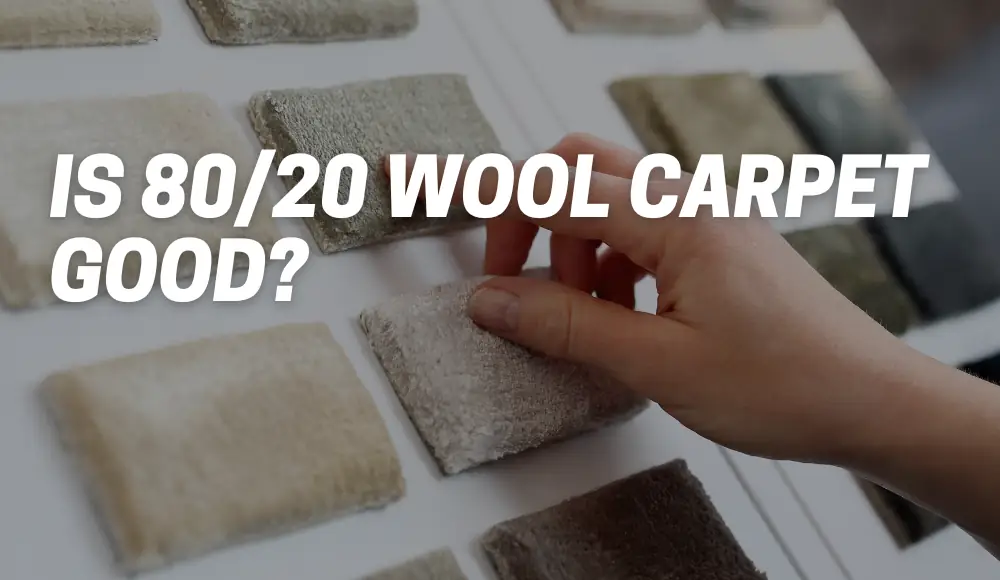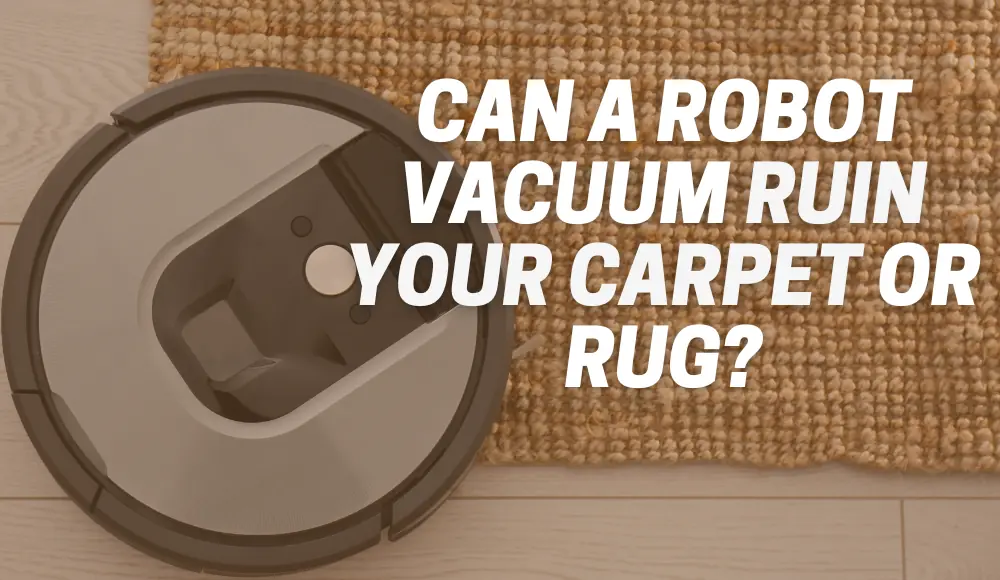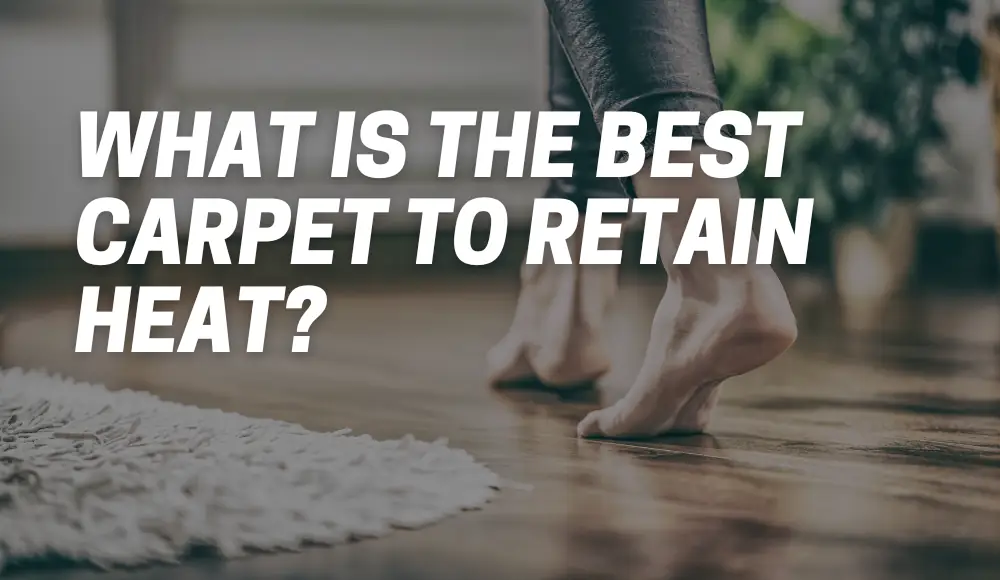Last updated on November 2nd, 2023 at 12:31 am
When it comes to choosing the perfect carpet for your home, you might find yourself faced with a plethora of options and terminology that can leave you scratching your head. One term that you may have come across is “80/20 carpet.”
But what exactly does this term mean, and is it a good choice for your flooring needs? In this article, we’ll dive deep into the world of 80/20 wool carpet, exploring its characteristics, benefits, and whether it’s the right fit for your space.
What Does 80/20 Mean in Carpet?
Before we delve into the specifics of 80/20 carpet, let’s unravel the mystery behind those numbers.
The term “80/20” refers to the composition of the carpet fibers. It signifies that the carpet is made from a blend of 80% wool and 20% synthetic materials. This combination of natural and synthetic fibers aims to harness the best of both worlds, offering the resilience of synthetics alongside the luxurious comfort of wool.
Is 80/20 Wool Carpet Durable? Absolutely! One of the standout features of 80/20 wool carpet is its remarkable durability. The blend of 80% wool and 20% synthetic fibers creates a carpet that can withstand the test of time. It’s not only resilient to regular foot traffic but also retains its shape and texture, ensuring your carpet remains looking fresh and new for years.
Is 80/20 Wool Carpet Stain-Resistant? While 80/20 wool carpet isn’t inherently stain-resistant like some synthetic options, it can be treated with stain-resistant coatings. These treatments can provide protection against spills and stains, making it a practical choice for households with pets or children.
Advantages of 80/20 Wool Carpet
- Luxurious Feel: 80/20 wool carpet is known for its soft and luxurious texture, adding a touch of elegance to any room.
- Natural Insulation: It offers excellent insulation properties, keeping your home warm in the winter and cool in the summer, which can potentially reduce energy costs.
- Environmentally Friendly: It’s a renewable and biodegradable material, making it an eco-friendly choice.
- Variety of Styles: 80/20 wool carpet comes in a wide range of styles, patterns, and colors to suit various design preferences.
Comparison with Other Carpet Materials To help you make an informed choice, here’s a quick comparison of 80/20 wool carpet with other common carpet materials:
| Property | 80/20 Wool Carpet | Nylon Carpet | Polyester Carpet |
|---|---|---|---|
| Durability | Excellent | Good | Fair |
| Stain-Resistance | Moderate (with treatment) | Good | Good |
| Eco-Friendliness | Very Eco-Friendly | Not Eco-Friendly | Not Eco-Friendly |
| Variety of Styles | Extensive | Varied | Varied |
| Cost | Moderate to High | Moderate | Low to Moderate |
Suitability for High-Traffic Areas 80/20 wool carpet’s durability and resilience make it a suitable choice for high-traffic areas in your home, such as living rooms and hallways. Its ability to maintain its appearance under pressure is a significant advantage.
Eco-Friendliness of 80/20 Wool Carpet
If you’re environmentally conscious, you’ll appreciate that 80/20 wool carpet
is generally considered to be more eco-friendly than fully synthetic carpets, such as those made from nylon or polyester. Here are some reasons why wool carpets are often seen as a more environmentally friendly flooring option:
- Renewable and Biodegradable: Wool is a natural fiber sourced from sheep, and it is renewable because sheep can be shorn annually. It is also biodegradable, which means it will break down naturally over time and not contribute to long-term waste problems.
- Low Energy Production: The production of wool fibers typically requires less energy compared to the manufacturing of synthetic fibers like nylon or polyester.
- Carbon Sequestration: Sheep farming can have a positive impact on carbon sequestration, as wool-producing animals graze on grass, which helps capture carbon dioxide from the atmosphere.
- Durability: Wool carpets tend to be more durable and have a longer lifespan than many synthetic alternatives. This longevity reduces the frequency of replacement, which can be environmentally beneficial.
- Natural Insulation: Wool has natural insulating properties, helping to regulate indoor temperature and reduce energy consumption for heating and cooling.
- Low VOCs: Wool carpets often have low levels of volatile organic compounds (VOCs) compared to some synthetic carpet materials, which can contribute to better indoor air quality.
However, it’s essential to note that the eco-friendliness of any carpet depends on various factors, including the production process, dyeing methods, and the use of other chemicals. Additionally, the environmental impact can vary based on how the carpet is manufactured and where it’s sourced.
For the most eco-friendly option, you may want to consider carpets made from sustainable or certified organic wool and those that use environmentally responsible production methods.
When looking for an eco-friendly carpet, you can check for certifications such as Green Label Plus, Cradle to Cradle, or others that indicate a commitment to sustainable and environmentally friendly practices in carpet manufacturing. It’s also a good idea to ask the manufacturer or retailer about their specific environmental practices and the source of their wool to make an informed choice.
Styles and Designs Available
When it comes to style, 80/20 wool carpet doesn’t disappoint. You can choose from a wide array of styles, including plush, Berber, and textured. Additionally, there’s a vast range of colors and patterns available, ensuring you find the perfect match for your home’s aesthetic.
Cost of 80/20 Wool Carpet
The price of 80/20 wool carpet can vary depending on factors like the brand, style, and quality. On average, you can expect to invest a bit more compared to synthetic options. However, the durability and luxurious feel make it a valuable long-term investment.
80/20 wool carpet, which typically means it contains 80% wool and 20% synthetic fibers, could range in price from $5 to $15 or more per square foot. Higher-end brands or custom-made carpets may cost even more.
How to Choose the Right 80/20 Wool Carpet for Your Home
To select the perfect 80/20 wool carpet for your home, consider factors like room usage, color, and texture. If you have pets or children, opt for stain-resistant treatments. Always request samples to see how the carpet looks in your space before making a decision.
100% Wool Carpet or 80/20: The Great Dilemma
When you’re in the market for a new carpet, the debate between 100% wool and 80/20 wool can leave you torn. Each option has its own set of pros and cons, making the decision a bit of a balancing act.
100% Wool Carpet:
- Luxurious Feel: A carpet made entirely from wool offers unparalleled softness and comfort underfoot.
- Natural Insulator: Wool is known for its exceptional insulation properties, helping to regulate indoor temperatures and reduce energy costs.
- Durability: Wool fibers are naturally resilient, making them resistant to crushing and retaining their shape over time.
- Price Point: However, the luxury and benefits of 100% wool come at a higher price tag.
80/20 Wool Carpet:
- Enhanced Durability: The addition of synthetic fibers boosts the carpet’s resilience and makes it more resistant to wear and tear.
- Budget-Friendly: Opting for an 80/20 blend can be a cost-effective way to enjoy some of the benefits of wool without the premium price.
- Variety: 80/20 wool carpets often come in a wider range of styles and designs, giving you more options to match your décor.
Ultimately, the choice between 100% wool and 80/20 wool boils down to your priorities.
If you’re seeking ultimate luxury and have the budget for it, 100% wool might be the way to go. On the other hand, if you’re looking for a balance between performance and affordability, 80/20 wool carpet could be your ideal pick.
Is 50% Wool Carpet Good? The Middle Ground
In the realm of wool carpets, you might also encounter carpets labeled as 50% wool blends.
While these carpets may not carry the same prestige as their higher wool content counterparts, they still have their merits.
A 50% wool carpet strikes a middle ground between the softness of wool and the durability of synthetic fibers. It can be a suitable option for areas with moderate foot traffic, offering a comfortable and cost-effective solution for your flooring needs.
However, if you’re looking for the full range of benefits that wool provides, you might find yourself leaning more towards the 80/20 blend.
What Type of Wool Carpet Is Best for You?
Now that we’ve established the significance of the 80/20 blend, let’s explore the various types of wool carpets available and how to determine which one suits you best.
- Loop Pile: This type of carpet features loops of yarn that create a textured surface. Loop pile carpets are known for their durability and resistance to wear, making them an excellent choice for high-traffic areas.
- Cut Pile: Cut pile carpets have their loops cut, resulting in a plush and luxurious surface. They come in different styles, including Saxony, which has a smooth and even appearance, and Frieze, which boasts a more casual and textured look.
- Berber: Berber carpets are characterized by their large, uncut loops and natural, earthy tones. They’re known for their durability and ability to hide dirt and stains, making them suitable for busy households.
- Patterned: Patterned wool carpets add visual interest and character to a room. They can be a statement piece on their own or complement your existing décor.
When choosing the best type of wool carpet for your space, consider factors such as foot traffic, room function, and your personal aesthetic preferences.
Is 80/20 the Best Carpet?
The million-dollar question: Is 80/20 wool carpet the ultimate flooring solution?
Well, the answer isn’t a straightforward yes or no. It depends on your specific needs and priorities.
The 80/20 blend offers a balance between the luxury of wool and the durability of synthetic fibers. It’s a versatile option that can cater to a wide range of households.
If you’re looking for a carpet that provides a comfortable feel underfoot while also withstanding the demands of everyday life, 80/20 carpet could be an excellent choice.
However, if you have the budget to splurge and desire the utmost in opulence, a 100% wool carpet might be more up your alley. On the other hand, if you’re strictly budget-conscious and durability is your main concern, you might explore carpets with higher synthetic fiber content.
Is 80/20 Wool Carpet Good for Stairs?
Staircases are often high-traffic areas that require a durable and resilient carpet. This brings us to the question of whether 80/20 wool carpet is suitable for stairs.
The answer is a resounding yes! The 80/20 blend’s combination of wool and synthetic fibers provides the necessary durability to withstand the constant foot traffic on stairs. Additionally, its natural stain resistance and ability to bounce back from compression make it a practical choice for this specific application.
When selecting an 80/20 wool carpet for your stairs, opt for a tightly woven style to ensure minimal wear and tear over time.
How to Clean 80/20 Wool Carpet
Maintaining the beauty and longevity of your 80/20 wool carpet involves proper cleaning and care. Here’s a step-by-step guide to help you keep your carpet looking its best:
- Regular Vacuuming: Vacuum your carpet at least once a week to remove dirt, dust, and debris. Use a vacuum with a rotating brush and adjustable height settings for optimal results.
- Immediate Spill Cleanup: Accidents happen, so it’s essential to address spills promptly. Blot the spill with a clean, dry cloth to absorb as much liquid as possible. Avoid rubbing, as it can push the stain deeper into the fibers.
- Periodic Professional Cleaning: Schedule professional carpet cleaning every 12-18 months to deep-clean and revitalize your 80/20 wool carpet. Professional cleaners have the expertise and equipment to remove deep-seated dirt and stains effectively.
- Rotate Furniture: To prevent uneven wear, periodically move furniture around to distribute foot traffic and compression across different areas of the carpet.
- Use Area Rugs: Place area rugs or runners in high-traffic zones to minimize direct wear on your 80/20 wool carpet.
- Avoid Direct Sunlight: Prolonged exposure to direct sunlight can cause fading and discoloration. Use window treatments to protect your carpet from UV rays.
Wool Carpet Stain Cleaning
—
How Do You Care for 80% Wool Carpet?
Caring for the wool component of your 80/20 wool carpet requires specific attention to maintain its luxurious appearance and texture:
- Gentle Cleaning Solutions: When cleaning stains, use mild, wool-safe cleaning solutions. Harsh chemicals can damage wool fibers.
- Regular Fluffing: Wool fibers can become compacted over time, especially in high-traffic areas. Gently fluff the carpet with your hands or a soft brush to maintain its plushness.
- Rotate Your Carpet: Like with furniture, rotating your carpet helps distribute foot traffic and prevents uneven wear.
- Avoid High Heels: Discourage walking on the carpet with high heels, as they can cause dents and damage to the fibers.
- Manage Humidity: Wool fibers can be sensitive to extreme humidity. Use a dehumidifier in damp environments to prevent mold and mildew growth.
In Summary
In the world of carpets, the choice between 80/20 wool and other options like 100% wool or synthetic blends isn’t black and white. It’s a decision that hinges on your preferences, lifestyle, and budget.
The 80/20 wool carpet presents a compelling middle ground, offering a harmonious blend of comfort and durability that can transform your living spaces into cozy havens.
So, whether you’re envisioning a luxurious oasis or a practical and inviting home, 80/20 wool carpet might just be the perfect fit for you.



